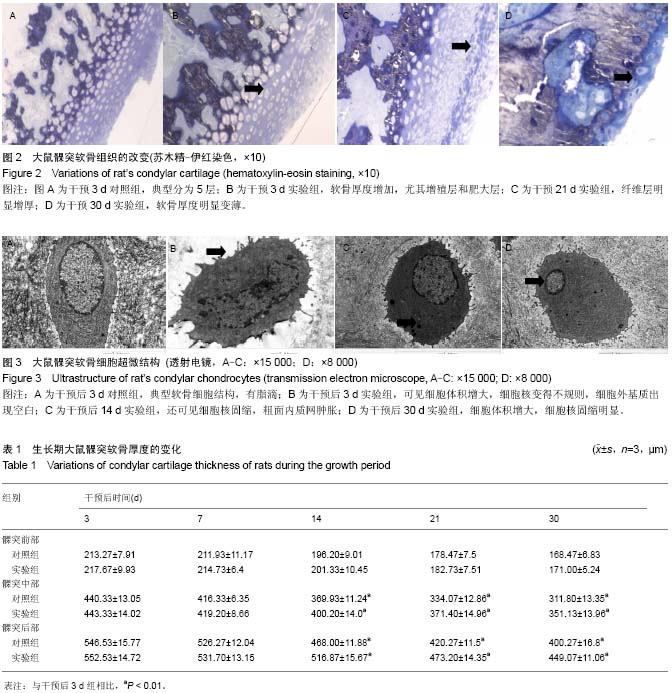| [1] McNamara JA. Components of ClassⅡmalocclusion inchildren 8-10 years of age. Angle Orthod. 1981;51(3):177-202.
[2] 林久祥.矫治器及技术进展[J],中国实用口腔科杂志, 2009,2(1): 5-8.
[3] Buranastidporn B, Hisano M, Soma K. Effect of biomechanical disturbance of the temporomandibular joint on the prevalence of internal derangement in mandibular asymmetry. Eur J Orthod. 2006;28(3):199-205.
[4] Chen J, Xu LF. A Finite Element Analysis of the Human Temporomandibular Joint. J Biomech Eng. 1993;116(4): 401-407.
[5] Rabie AB, Zhao Z, Shen G, et al. Osteogenesis in the glenoid fossa in response to mandibular advancement. Am J Orthod Dentofac Orthop. 2001;119(4):390-400.
[6] Nakano H, Watahiki J, Kubota M, et al. Micro x-ray computed tomography analysis for the evaluation of asymmetrical condylar growth in the rat. Orthod Craniofac Res. 2003;6(1):168-182.
[7] Isacsson G, Carlson DS, McNamara JA Jr. Effect of maxillomandibular fixation on condylar growth in juvenile Macaca mulatta: a cephalometric and histologic study. Scand J Dent Res. 1993;101(2):103-109.
[8] 沈刚,赵志河.咬合前导矫治器引发的髁突软骨改建的定量评价[J].口腔正畸学,2000,7(1):9-11.
[9] Inoue H, Nebgen D, Veis A. Changes in phenotypic gene expression in rat mandibular condylar cartilage cells during long-term culture. J Bone Miner Res. 1995;10(11):1691-1697.
[10] Rabie AB, Hugg U. Factors regulating mandibular condylar growth. Am J Orthod Dentofacial Orthop. 2002;122(4): 401-409.
[11] Feres MF, Alhadlaq A, El-Bialy T. Adjunctive techniques for enhancing mandibular growth in Class II malocclusion. Med Hypotheses. 2015;84(4):301-304.
[12] Tonge EA, Heath JK, Meikle MC. Anterlor mandibular displacement and condyle growth:An experimental study in the rat. Am J Orthod. 1982;82(4):277-287.
[13] Vargervik K, Harvold EP. Response to activator treatment in Class II malocclusion. Am J Orthod. 1985;88(3):242-251.
[14] Pancherz H, Fischer S. Amount and direction of the temporomandibular joint growth changes in the treatment:a cephalometric long-term investigation. Angle Orthod. 2003; 73(5):493-501.
[15] Rabie AB, She TT, Harley VR. Forward Mandibular positioning up-regulates sox9 and type II collagen expression in the glenoid fossa. J Dent Res. 2003;82(9):725-730.
[16] 饶跃,?罗颂椒,肖邦良.大鼠下颌髁突生长发育的组织学和组织化学研究[J].华西口腔医学杂志,1990,(1):30-33.
[17] Rabie AB, Xiong H, Hagg U. Forward mandibular positioning enhances condylar adaptation in adult rats. Eur J Orthop. 2004;26(4):353-358.
[18] 沈刚,Rabie AB,Hägg U,等.下颌前伸后髁突软骨成熟层内Ⅹ型胶原的表达[J].华西口腔医学杂志,2000,4(18):78-84.
[19] Sibermann M, Reddi AH, Hand AR, et al. Further characterization of the extracelluar matrix in the mandibular condule in neonatal mice. J Anat. 1987;129(3):231-237.
[20] 谷志远,冯剑颖,吴慧玲,等.颞下颌关节盘前移后双板区改建的实验研究[J].华西口腔医学杂志,2002,20(6):408-410.
[21] 赵志河,Rabie AB,Hägg U,等.固定功能矫治器前伸大鼠下颌后髁突适应性生长改建特征的计算机辅助图像分析[J].华西口腔医学杂志,1999,17(2):155-157.
[22] Suda N, Shibata S, Yamazaki K, et al. Parathyroid hormone-related protein regulates proliferation of condylar hypertrophic chondrocytes. J Bone Miner Res. 1999; 14(11):1838-1847.
[23] Voudouris JC, Kuftinec MM. Improved clinical use of Twin-block and Herbst as a result of radiating viscoelastic tissue forces on the condyle and fossa in treatment and long-term retention: growth relativity. Am J Orthod Dentofacial Orthop. 2000;117(3):247-266.
[24] 马绪臣.颞下颌关节病的基础与临床[M].北京:人民卫生出版社, 2000.
[25] 饶跃,罗颂椒,王大章,等.下颌前伸后大鼠下颌髁突适应性生长改建的组织学和组织化学研究[J].华西口腔医学杂志,1992,10(3): 210-213.
[26] 吴军正,司徒镇强.口腔生物学[M].2版.西安:第四军医大学, 1999.
[27] 毛勇,王忠义,段小红,等.负荷改变对髁突软骨细胞合成蛋白多糖的影响[J].实用口腔医学杂志,2001,17(2):112-114.
[28] 杨红梅,罗颂椒.机械压力对大鼠下颌髁突软骨细胞增殖活性影响的体外研究[J].华西口腔医学杂志,1999,17(4):331-334.
[29] 李小兵,罗颂椒,张世羽.功能矫形前伸大鼠下颌后髁突软骨β-转化生长因子-Ⅰ(TGF-β1)表达变化的研究[J].华西口腔医学杂志, 1998,16(4):352-354.
[30] 饶跃,罗颂椒,王大章,等.下颌前伸后对大鼠髁突适应性生长改建影响的研究[J].中华口腔医学杂志,1994,29(1):27-30.
[31] Stockli PW, Willert HG. Tissure reactions in the temporomandibular joint resulting from anterior displaeement of the mandible in the monkey. Am J Orthod. 1971;60(2): 142-155.
[32] Ghafari JD. Condyle cartilage response to continuous mandibular displacenment in the rat. Angle orthod. 1986; 56(1): 49-57.
[33] 谷志远,胡莹,张银凯,等.兔髁突软骨组织学分层的实验研究[J].上海口腔医学,2005,14(1):33-36.
[34] Matyas JR, Ehlers PF, Huang D, et al. The early molecular natural history of experimental osteoarthritis. Arthris Rheum. 1999;42(5):993-1002.
[35] Petrovic A, Stutzmann J, Lavergne J. Is it possible to modulate the growth of the human mandible with functional appliance. Bilon UOJ. 1988;21(1):15-20.
[36] 刘莹,汤欢,杨午,等.不同下颌前伸力对髁突Runx2和X胶原表达的影响[J].实用口腔医学杂志,2013,29(5):621-625.
[37] 李松,郭维华,徐芸.不同静压力对新生SD大鼠髁突软骨细胞增殖与凋亡的影响[J].实用口腔医学杂志,2007,23(6):822-825.
[38] Burr DB, Milgrom C, Fyhrie D, et al. In vivo measurement of human tibial strains during vigorous activity. Bone. 1996;18(5): 405-410.
[39] Frost HM. From Wolff’s law to the mechanostat: a new “face” of physiology. J Orthop Sci. 1998;3(5):282-286. |

